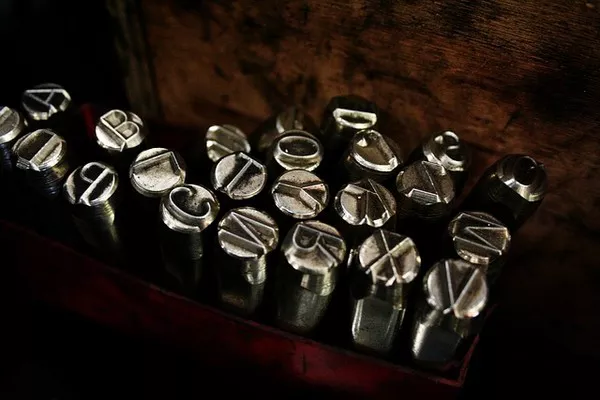Silver, often referred to as the “poor man’s gold,” has been a valuable and sought-after precious metal throughout human history. As an essential component in various industries and a store of value, silver’s price has experienced fluctuations over the centuries. In this article, we delve into the historical records to explore the highest value silver has ever reached and the factors that contributed to these peaks.
Historical Context:
To comprehend the highest value silver has ever achieved, we must journey through the annals of history. Silver has been used as currency, jewelry, and an industrial commodity for thousands of years, with its value influenced by economic, geopolitical, and technological factors.
The Hunt Brothers’ Silver Boom:
One of the most significant episodes in silver’s price history occurred in the late 1970s and early 1980s when the Hunt brothers, Nelson Bunker Hunt and William Herbert Hunt, attempted to corner the silver market. Their ambitious venture began in the early 1970s when they started accumulating vast amounts of physical silver and silver futures contracts.
By 1979, the price of silver had skyrocketed from around $6 per ounce to a staggering $50 per ounce. The Hunt brothers’ aggressive buying spree and attempts to manipulate the market led to a regulatory crackdown. The Commodity Futures Trading Commission (CFTC) imposed trading limits on silver futures contracts, and the bubble burst.
On January 21, 1980, silver reached its highest recorded value of $50.35 per ounce. The fallout from the Hunt brothers’ scheme caused a significant market crash, leading silver prices to plummet in the subsequent months.
Post-1980: A Bumpy Ride for Silver:
After the collapse of the Hunt brothers’ silver empire, the precious metal faced a prolonged period of decline. Silver prices struggled to regain momentum and experienced fluctuations in response to changing economic conditions, inflation rates, and shifts in global demand.
During the 2008 financial crisis, investors sought refuge in precious metals, including silver, as a hedge against economic uncertainty. Silver prices reached a high of $20.79 per ounce in March 2008. However, this surge was short-lived as the crisis deepened, prompting a broad sell-off across financial markets.
The New Millennium: Silver’s Resurgence:
In the early 21st century, silver experienced a renaissance fueled by a combination of factors. The global financial crisis of 2008, coupled with low-interest rates and expansionary monetary policies, prompted investors to flock to precious metals. By April 2011, silver had once again reached remarkable heights, touching $48.70 per ounce.
The surge in silver prices during this period was also influenced by growing industrial demand, particularly from the electronics and solar panel industries. Silver’s unique properties, including its conductivity and reflectivity, positioned it as a crucial component in various technological applications.
Factors Influencing Silver Prices:
Several factors contribute to the volatility and fluctuations in silver prices. Understanding these elements is crucial in assessing the highest value silver has ever achieved:
Industrial Demand: Silver’s role in various industrial applications, such as electronics, photography, and solar panels, significantly influences its price. Changes in industrial production and technological advancements impact silver demand and, subsequently, its value.
Investor Sentiment: Silver is often considered a safe-haven asset, attracting investors during times of economic uncertainty. Shifts in investor sentiment, driven by geopolitical events, inflation concerns, or currency fluctuations, can lead to rapid changes in silver prices.
Global Economic Conditions: Silver, like other commodities, is sensitive to global economic conditions. Economic growth, inflation rates, and currency values all play a role in shaping silver’s value.
Mining Production: The supply side of the silver market is influenced by mining production. Changes in mining output, influenced by factors such as exploration success, labor strikes, or regulatory issues, impact the overall supply and, consequently, prices.
Currency Fluctuations: Since silver is traded globally, changes in currency values can affect its price. A weakening U.S. dollar, for example, often leads to higher silver prices, as it becomes relatively cheaper for investors holding other currencies.
Conclusion:
The highest value silver has ever reached, at $50.35 per ounce in January 1980, remains an intriguing chapter in the metal’s history. The Hunt brothers’ attempt to corner the silver market serves as a cautionary tale of the potential pitfalls of market manipulation. Subsequent peaks in silver prices, such as those witnessed in 2011, were driven by a combination of economic, industrial, and investor-driven factors.
As we navigate the dynamic landscape of the silver market, it is essential to recognize the multifaceted nature of the precious metal’s value. Silver’s historical peaks offer valuable insights into the interplay of supply and demand, investor sentiment, and global economic conditions. As we move forward, the silver market will undoubtedly continue to respond to a complex web of factors, shaping its value and significance in the world of finance and industry.


